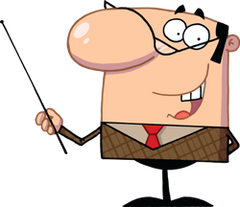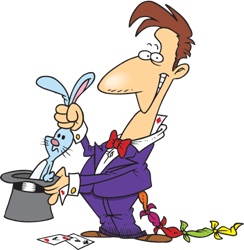Unreal Conditionals Lesson Plan
There are two kinds of conditionals in English: real conditionals and unreal conditionals.
These constructions are quite common in English, so it's very important for your students to feel comfortable with them. Our English Conditionals: a Step-by-Step Workbook is a complete resource with all the explanations, examples, and exercises you need to teach your students English conditionals. It has everything you need to teach these topics with no extra planning required.
This lesson plan will help you introduce unreal conditionals (the second conditional and the third conditional). Remember to study the unreal conditionals after you have already learned the real conditionals. The unreal conditionals can require lots of practice, so take the time you and your students need.
Be sure your students really understand the real conditionals before moving on. Also, if you find that you need to spend one class on the second conditional and another on the third conditional, that is no problem.
As usual, we will be organizing our English class with an introduction, activation, and review. This lesson plan is for a one-hour class.

Unreal Conditionals Introduction (15-20 Minutes)
The first step is to give a clear explanation of what unreal conditionals are.
A conditional sentence always has a cause and an effect. Unreal conditionals talk about unlikely or hypothetical (imaginary) situations.
The second conditional describes imaginary situations of cause and effect in the present or unlikely situations in the future.
For example:
- If I were taller, I would play basketball.
(I am really not very tall, so I don't play basketball. This is an imaginary situation in the present.) - If we won the lottery, we would travel all over the world.
(It is very unlikely for us to win the lottery.)

It is important to cover the structure when you work with unreal conditionals. In the second conditional, the "cause" clause uses the simple past, and the "effect" clause uses would. Remind your students that we don't usually use the word then, and that we can change the order of the sentence.
For example:
- I would play basketball if I were taller.
Another thing to remember is the use of the verb be in the second conditionals: we use were for all persons (If I were... If he/she/it were...).
Now, we use the third conditional to talk about imaginary situations in the past. These situations are contrary to what really happened.
For example:
- If I had known about the meeting, I would have attended.
(I did not know about the meeting, so I did not attend.) - If they had helped us, it would not have taken so long to finish.
(They did not help us, so it took a long time to finish.)
In the third conditional, we use the past perfect in the "cause" clause and would + the present perfect in the "effect" clause. Again, we do not usually use the word then, and we can change the order of the sentence.
For example:
- I would have attended the meeting if I had known about it.

Now, have your students help you make some more examples. Their examples will be more real for them, and they can base them on their own lives. Check to see that they are using the grammar correctly, and if there are mistakes, have the other students help to correct them. This is a good way to check understanding before you move on to the next part of your class.
Activation (35 Minutes)
As usual, we will do two different activities to let your students activate the new skills you have just explained.
To practice the second conditional, create a worksheet for your students with some situations on them. Have your students work in pairs to complete the sentences. (If you have one student, you can work together.) When they are finished, everyone will share their answers. Who has the funniest answers?
Use "cause" clauses like these:
- If I were very rich...
- If my pet learned how to talk...
- If I could go anywhere in the world...
- If I met a magician...

To practice the third conditional, try an activity with two steps. It can be a difficult structure for students, so be sure to take the necessary time to practice with your students.
Create a separate worksheet with sentences about the past. Give a cause and effect. Your students can work in pairs again.
First, Student A should read the sentence out loud. Then Student B will create a third conditional sentence that is contradictory to what happened. Finally, they should create a new ending together. They should swap roles for the next sentence.
For example:
- Student A: "It rained yesterday. I did not go outside."
1. Student B: "If it had not rained yesterday, I would have gone outside."
2. Student A and Student B: "If it had not rained, I would have walked in the park with my dog."

Give a clear explanation of the activity with this example. When you are sure your students understand the instructions, try using these situations:
- I did not know it was my friend's birthday. I did not call her.
- The subway was not working yesterday. I had a difficult trip to work.
- I did not hear my alarm yesterday. I did not wake up on time.

Review (5-10 Minutes)
Now your students have practiced the new skills. Congratulate them on their hard work and on their creativity. They have made lots of interesting examples!
Before you end the class, take a few minutes to review the second conditional and the third conditional. Ask your students to tell you in their own words what kinds of situations they describe. Have them give you one last example of each to review the structures again.
Remember that your examples can be silly and fun. Your students will be practicing this important grammar!
If your students still don't feel comfortable with the second conditional and the third conditional, take time in your next class to keep reviewing. Practice makes perfect!






